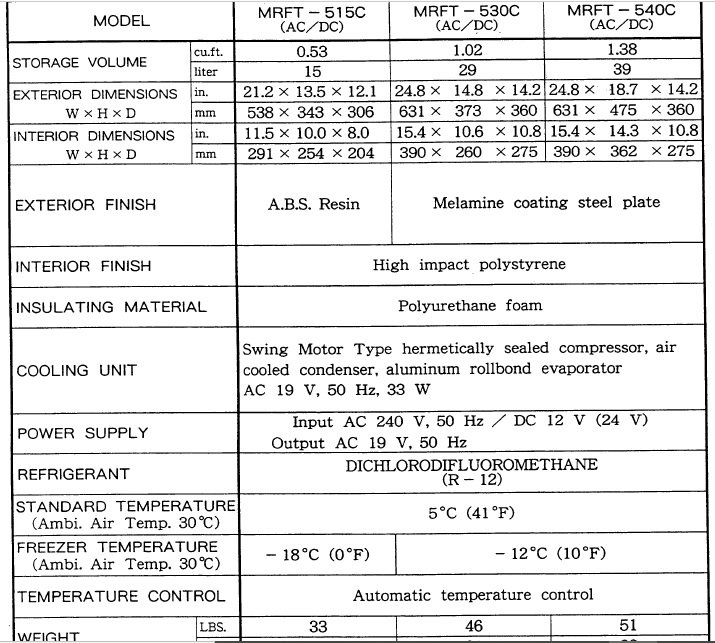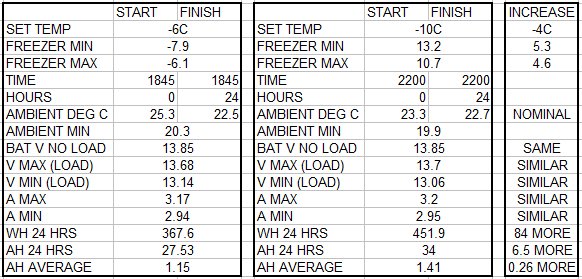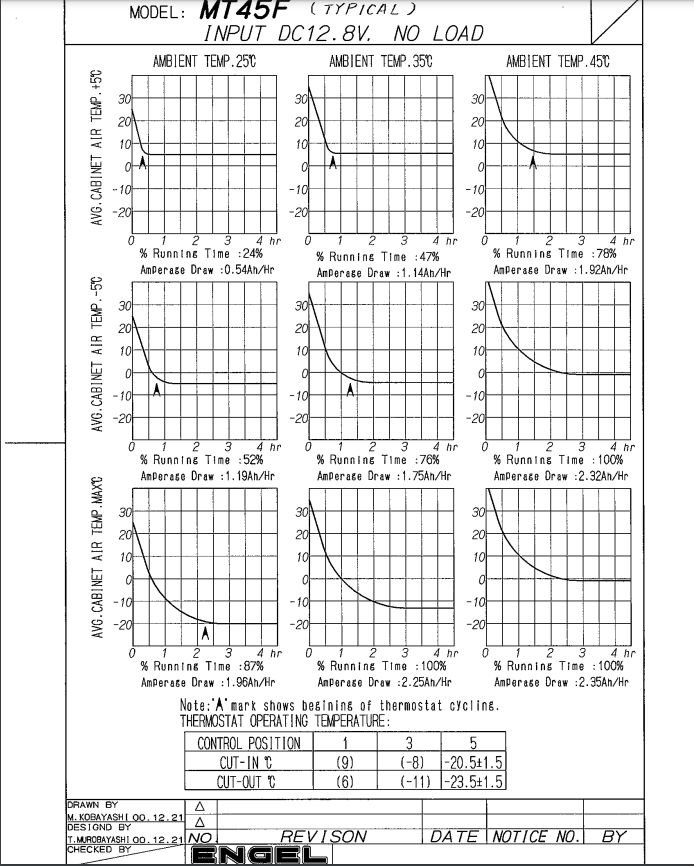I wasn't sure where to put this post, but it might help the author of the post.

Tested the new Engel 39lt Combi (MT45F-G4CD-V) over two days. Battery is the LiFePo4 Pylontech Lithium. Tested in a non airconditioned room of the house.
Notes:-
1. The fridge was completely empty, which tends to be worst case scenario as food/drink bulk help with stored temperature.
2. The set temperature was stabilised on 240 VAC before switching to battery for each test.
3. The battery was charged back to 100% after each test.
4. Power meters and temp gauge all reset between each test.
I did not test to max cold (-18) as 2 tests at minus 5 & 10 are close enough for me. Nor did I measure fridge compartment temp continuously. I did an initial check at the -5 setting and it showed 1.7C to 2.1C over 30 minutes and without content, not realistic.
Results:-
https://www.prospectingaustralia.com/forum/img/member-images/1932/1639656934_engel_test.jpg
Conclusions:-
1. After 24 hours and under load, the Lithium is still holding above 13 V which, for me, is a huge bonus. Given the testing, I will turn the Low Battery function of the Engel off.
2. The actual temperature of the freezer was held at or below the set temperature in both tests and up to approx 3 degrees C colder.
3. Given this result I think that as a freezer, especially as most of my use when prospecting is in winter, a setting of -8 is what I will use. This will achieve a range of -8 to -11 C.
4. Averaging AH from the 2 tests should give approx 30 AH when set to -8 C.
5. Most fridge specs give power use at around 25 C ambient. My tests were an average of around 23 C, again close enough for me.
6. In the colder winter months of Victoria, I would expect a slightly lower power consumption. Conversely, much more on days of high 30s C to 40 plus.
7. Super impressed with the Lithium holding voltage and should get close to 3 days before a charge is needed. But for cycle life, not gonna happen and charged every day.









